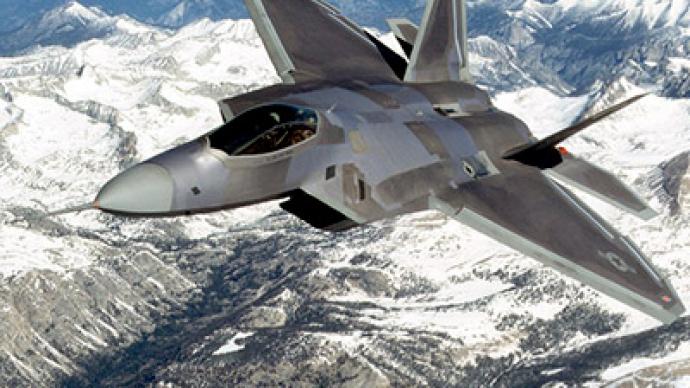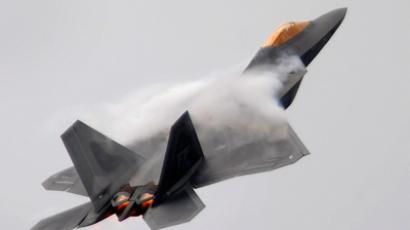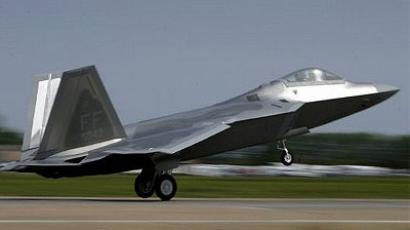US Air Force knew of crippling F-22 flaws for a decade

High-level Air Force experts were aware of now-notorious flaws in the F-22 Raptor fighter jet’s oxygen supply system more than a decade ago. A range of solutions were proposed as early as 2005, the AP reported, citing internal documents and emails.
A group of experts calling themselves RAW-G (Raptor Aeromedical Working Group) formed a decade ago during an early stage of production to brainstorm solutions to the problem. The group presented its recommendations in 2005, and held its final meeting in 2007 before it was dissolved.The military rejected the proposed improvements to the jet’s oxygen supply and oxygen mask systems for purely economic reasons: The F-22 project was already well over budget, and there was no will to spend more on the already $190 million stealth jet.A year after the group disbanded, F-22 pilots began to complain about the infamous "Raptor cough" and dizziness while flying at high altitudes.In 2010, hypoxia was deemed to the main factor in the fatal F-22 crash in Alaska of Col. Jack McMullen, commander of the Air Force's 3rd Wing. His jet hit at such a high velocity that only small fragments of the debris could be recovered. McMullen’s body was never retrieved.The Air Force grounded the 187-plane F-22 fleet for four months after the crash; F-22s were then only allowed to operate at altitudes where pilots did not need to use an oxygen mask.Another blow was dealt to the program when two F-22 pilots – Major Jeremy Gordon and Captain Josh Wilson – gave a May 2012 interview on the CBS program ‘60 Minutes’ and publicly vowed they would refuse to fly in the aircraft. Both claimed they had experienced symptoms of oxygen deprivation during and after their flights in the F-22.In July 2012, the US Air Force reported that it had identified the reason behind the spate of F-22 pilots fainting. The hypoxia incidents were blamed on constricting altitude vests.The Air Force said it would lift the flight restrictions on the F-22 imposed by the US Defense Secretary Leon Panetta. At the same time, ground crews exhibiting the same symptoms as the pilots led some to speculate that a contaminated oxygen supply could be the culprit.Congress recently decided that the F-22 was too expensive, effectively delivering a death sentence to the program. F-22 production was halted last spring, with fewer than 200 units produced. The initial production plan called for more than 2,000 F-22s.The Air Force currently plans to introduce some of the measures proposed by the RAW-G group, such as a backup oxygen system and a replacement for the faulty valve in the pilots' vests.The so-called ‘best fighter jet ever’ has never actually been tested in live combat, despite the US being in a near-constant state of war since it invaded Afghanistan in 2001. Most of the F-22 Raptor’s supposed combat advantages are, at this moment, entirely theoretical.














